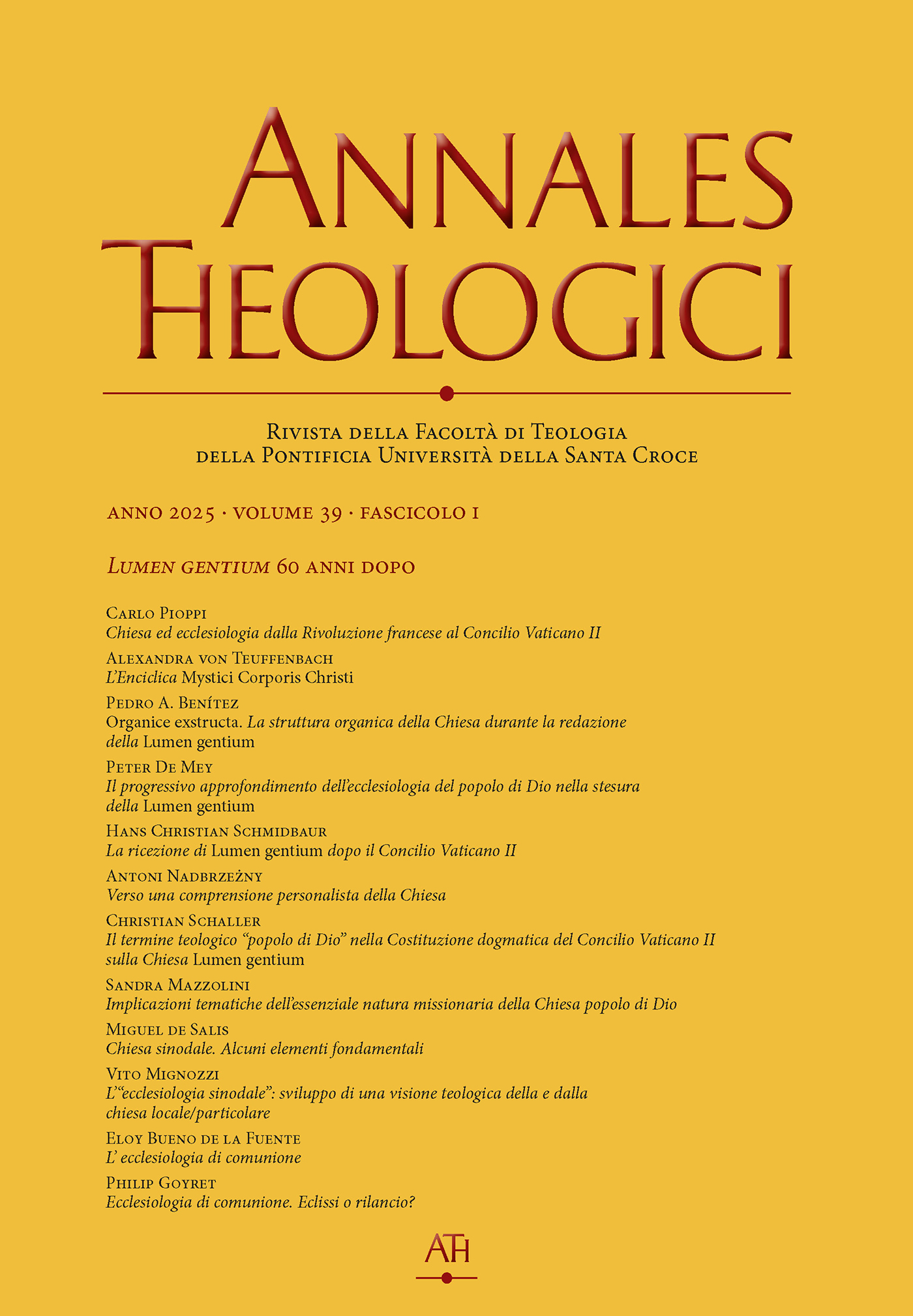The Reception of “Lumen gentium” after the Second Vatican Council
DOI:
https://doi.org/10.17421/ATH391202505Keywords:
Communio sanctorum, Ecclesiology of the People of God as a new “Ecclesiology from Downstairs”?, Cum et sub Petro, Communitarian Apostolic Authority of the Bishops, Bipolar Thinking of Romano GuardiniAbstract
The true sense of the new “Ecclesiology of Communion”, realized in the decree Lumen gentium, can only be achieved if we don’t interpret “communion” in a modern and secular way, but as a Communio sanctorum which has its roots in the hierarchic Communion of the Triune God himself. In the Church as people of God, the vertical relation of an intimate union with God must therefore always keep the absolute primacy and also form the horizontal relations and the communion of all the faithful in heaven and on earth.
In consequence, the Church can never become a “democracy”, or a “republic of scientists”, which can change her doctrines and structures according to its proper will, but must always remain – as J. Ratzinger underlined in his book The Theology of the Council – a “Theocracy”. Against all forms of a new “ecclesiology from downstairs” that had been afterwards proclaimed, the ecclesiology of Lumen gentium must be interpreted not as a “rupture with the teachings of the I Vatican Council”, but rather as its congruent continuation and completion which regained a new communitarian balance between papal primacy and the communitarian apostolic authority of the bishops.








